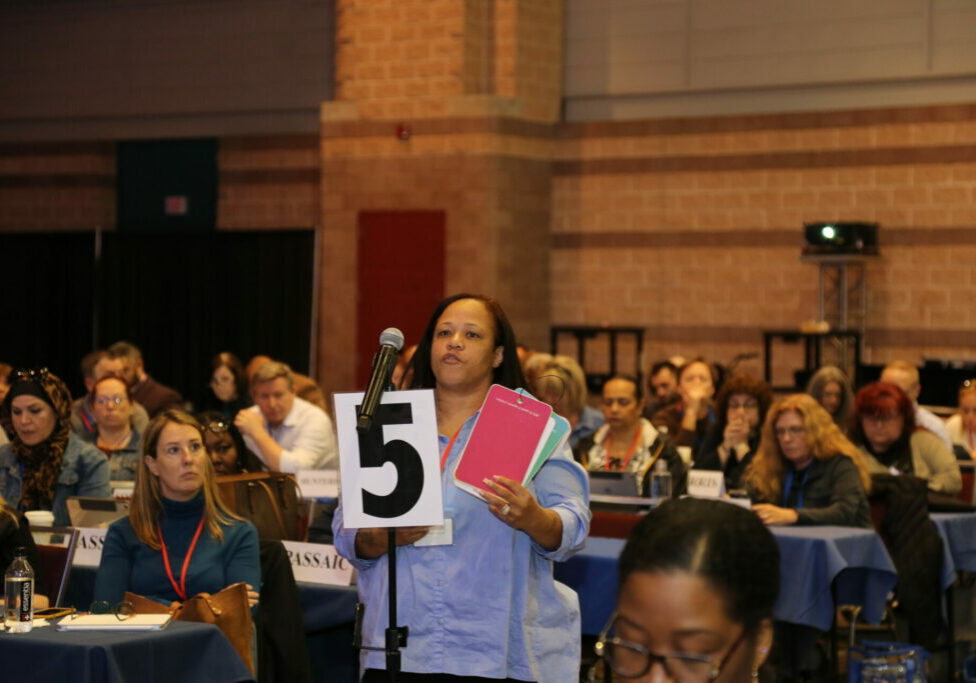Since at least 1941, the January edition of what is now called the NJEA Review has published a directory of association committees. While the number of committees and the number of members who serve on them has changed, this edition of the NJEA Review continues this long-standing tradition. That NJEA members volunteer to serve on committees, has not changed either.
NJEA is structured as a representative democracy. The Delegate Assembly (D.A.), NJEA’s highest policy-making body, is in many ways modeled after the U.S. House of Representatives. As citizens in each of the 50 states elect a certain number of representatives to Congress based upon population, NJEA members from each county elect a certain number of delegates to the D.A. based on county membership. In addition to counties, four other constituencies have proportionate representation on the D.A.: higher education, NJREA, NJEA Preservice and non-classroom teacher members. Delegates serve two-year terms. Every April, elections are held to elect approximately half of the delegates.
D.A. members are elected to represent you and your interests as an NJEA member. Where members of Congress are expected to be accessible in their home districts, members of the D.A. are accessible to the members in their respective counties. They deliver reports concerning D.A. actions to their county representative councils. They also receive feedback at those same county meetings and bring ideas and concerns back to the D.A.
Members can reach out directly to their D.A. representatives. They have an NJEA email address, and they want to hear from you. Each D.A. member’s email address is their first initial and last name followed by @njea.org. You’ll find the names of your representatives to the D.A. on Page 32.
With over 120 members, it’s possible that a D.A. member comes from your district or may even work in your school. So be sure to review the list of members.
The D.A. is not the only structure within NJEA where members are elected to carry out the work of our union. NJEA’s Executive Committee, which includes the president, vice president and secretary-treasurer, as well as 27 other members representing counties and other constituent groups, is charged with executing the policies approved by the D.A. Their names are also on Page 32.
Additionally, more than 50 statewide committees, with charges covering a wide range of issues, meet throughout the year. You may find that speaking with a committee member will help you think through an idea that you have. Committee members do not necessarily have an email address on NJEA’s server, however, you can reach the committee through the listed NJEA staff contact. All committees are listed in this month’s Review on pages 33-38.
Finally, similar structures exist at the county and local levels, ensuring that every NJEA member has many colleagues representing their interests throughout our large and democratic organization.
Remember, when you vote for your representatives to the D.A. and other association offices, when you communicate with the representatives you have elected, when you support them in advocating for issues that matter to you, when you engage in that advocacy work yourself, and when you step up to run for positions in your local, county, or state association, you are making your union even stronger.
